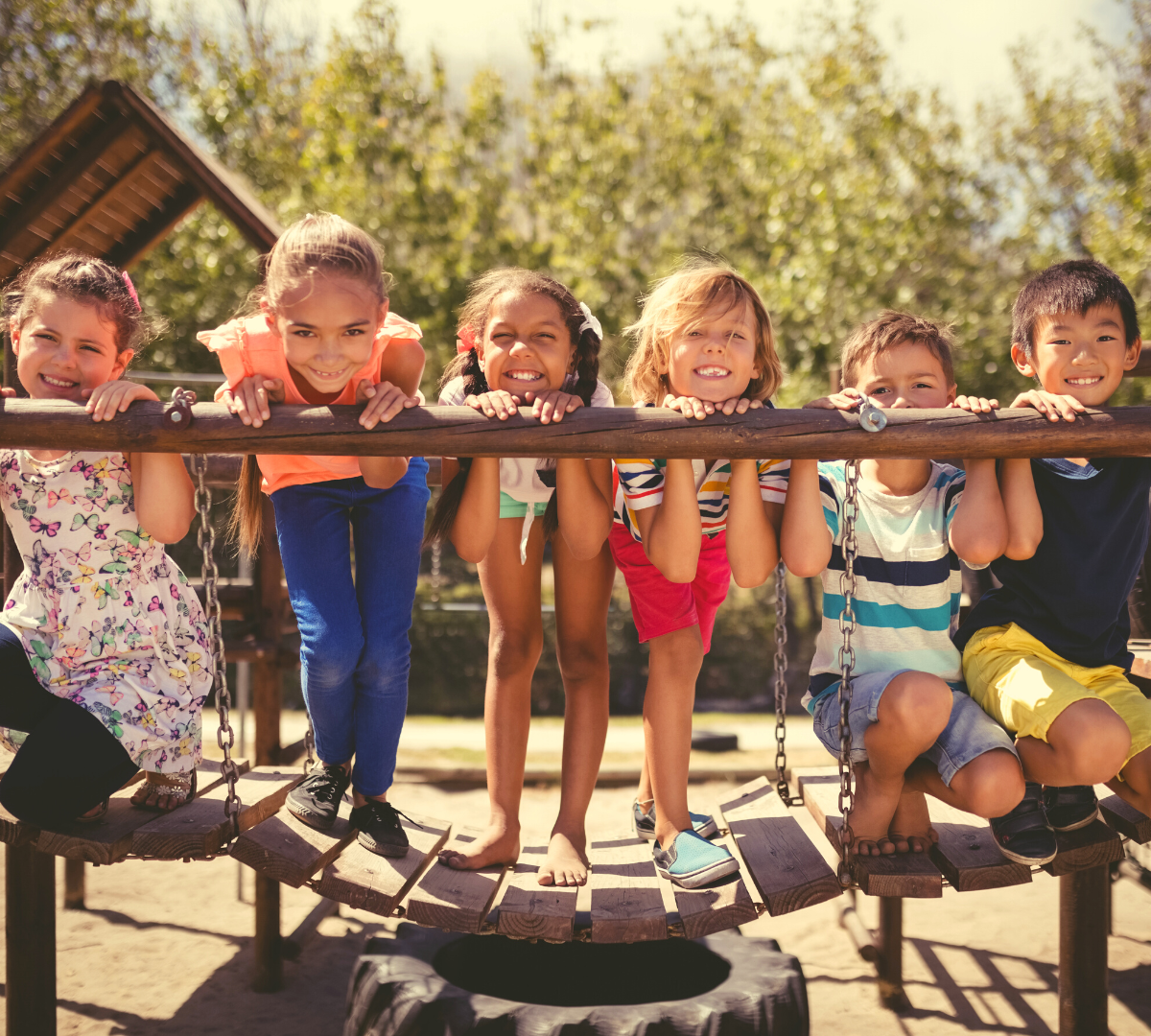
As the weather warms, kids venture outdoors. Outside play is essential for healthy childhood development, and playgrounds are great places for children to have fun, explore and grow. After all, children learn best through play and need safe opportunities to take risks, test their limits and learn new skills.
When not used properly or if a child isn’t quite ready, playground equipment can pose risk for injuries, including concussions. Being able to respond to playground accidents promptly and appropriately is an important skill set for all parents during the warmer months!
What is a concussion?
According to the CDC, “A concussion is a type of traumatic brain injury—or TBI— caused by a bump, blow, or jolt to the head or by a hit to the body that causes the head and brain to move quickly back and forth. This fast movement can cause the brain to bounce around or twist in the skull, creating chemical changes in the brain.”
How can I help prevent playground injuries?
Use this commonsense checklist to improve playground safety.
- Choose the right playground equipment for your child’s age and skills.
- Check that playground equipment has soft material underneath, like wood chips, sand, rubber, or mulch. Soft surfaces lessen risk of injury.
- Check the area for things that might trip your child like tree stumps or rocks.
- Make sure there are guardrails to help prevent falls.
- Dress your child properly for the playground – no necklaces, scarves, purses or clothing that could get caught around their neck or pose a hazard.
- Use play equipment properly. Never climb up slides (use the ladder or stairs instead), and never jump from the swings or the top of the slide.
- Children are more likely to get a concussion or other serious injury when using the Monkey bars, climbing equipment and swings. It’s best to supervise your child closely while they play and assist them if they are still learning.
How can I spot a severe injury?
If a fall has occurred, check for the following signs of a serious head injury BEFORE picking up your child.
- Loss of consciousness
- Vomiting
- Bruising or swelling along the head, or obvious skull fracture
- In a baby, swelling of the soft spot
If any of these signs are present, call 911 for emergency assistance. Stay with your child until help arrives, but do not move the child as another injury might have occurred.
Other danger signs to watch for after a fall include:
- One pupil larger than the other.
- Drowsiness or inability to wake up.
- A headache that gets worse and does not go away.
- Slurred speech, weakness, numbness, or decreased coordination.
- Unusual behavior, increased confusion, restlessness, or agitation.
If any of these are present, seek emergency medical care right away.
What are the signs of a concussion?
Your child might have sustained a concussion if the following signs of symptoms occur:
Signs You Might Observe:
- Appears dazed or stunned.
- Is easily confused.
- Moves clumsily.
- Answers questions slowly.
- Loses consciousness (even briefly).
- Shows mood, behavior, or personality changes.
- Can’t recall events prior to or after a hit or fall.
Symptoms Your Child Might Report:
- Headache or “pressure” in head.
- Nausea or vomiting.
- Balance problems or dizziness, or double or blurry vision.
- Bothered by light or noise.
- Feeling sluggish, hazy, foggy, or groggy.
- Confusion, or concentration or memory problems.
- Just not “feeling right.”
If you see any of these signs or symptom and think your child has a concussion or other serious head injury, seek medical help right away.
Signs and symptoms may show up right after the injury, or they may not appear until hours or days later. Once the 24-hour mark has passed, the chance of a serious injury is low. After a fall, children, especially babies are more likely to want to sleep. Whether they have a minor head injury/concussion or not, it is not necessary to keep them awake. Instead, try to wake them every two to three hours to make sure they are arousable.
Most children who experience a concussion recover fully and feel better within a few weeks, while others will have symptom for months or longer. If you’re concerned for any reason, seek medical attention after a playground injury!
Most importantly, enjoy outdoor time with the kids. Adopting a commonsense approach to playground play goes a long way in preventing injuries. And while accidents do happen, don’t be scared! Be vigilant and prepared to ensure quick and effective treatment for your child this summer season.
Sources:
Safety of School Playgrounds: Field Analysis From a Randomized Sample.Olsen H, Kennedy E.J Sch Nurs. 2020 Oct;36(5):369-375. doi: 10.1177/1059840519827364. Epub 2019 Feb 5.PMID: 30722719
The prevention of playground injuries.
Hudson S, Thompson D, Mack MG.J Sch Nurs. 1999 Aug;15(3):30-3.